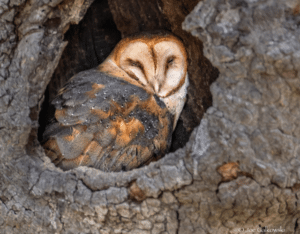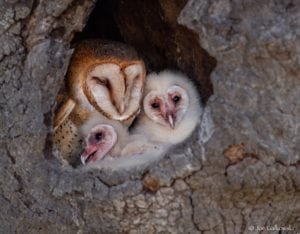An Owl by Any Other Name
By Joe Galkowski
The ghost owl, death owl, white owl, monkey-faced owl, church owl, and my favorite: the hobgoblin owl, these are just a small selection of the common names used for barn owls. The Latin name for the species is Tyto Alba which simply means white owl. Seems like an appropriate moniker, so why so many other names for the world’s most common owl? Most likely their nocturnal nature, eerie calls, white feathering, and completely silent flight, inspired men to create myths and legends of the barn owl’s connections with death and the afterlife and those stories have led to the different names being adopted.
The Native Americans who lived in what is now Yosemite National Park, believed that if a warrior lived life without honor, that after death, he would return to earth as a barn owl. If, however, he lived a good life, with integrity and courage, he would come back as a great horned owl. As a person who spends a fair amount of time with both species, I can say that great horned owls do seem braver around people and they are tougher birds. That said, barn owls have always been my favorite.

This Spring, I enjoyed watching a barn owl nest that was in a large cavity of an old oak tree. When the nest was first discovered, the female was incubating eggs. At least five of them successfully hatched. Later, we marveled at how her five owlets cuddled together on cold mornings, shared food, and even occasionally groomed each other.

Barn owl young hatch over a period of a few weeks so there are dramatically different size owlets in a barn owl nest. I knew that the moms leave the nest when the youngest owlet is able to self-regulate their own body heat, but I did not expect to see the older owlets taking care of the younger ones. Notice the difference in maturity levels. Also, the monkey-faced owl name makes sense to me when looking at the owlets.

Barn owls are one of the most widely distributed birds on the planet. They live on every continent except Antarctica. They also often live in close proximity to people, sometimes nesting in man-made structures such as, well… barns, hence the currently accepted name. It should be clear though, that no matter what name you use for these wonderful birds, seeing one is a true gift. They have an air of mystery combined with great beauty.

Joe Galkowski has been a wildlife photographer and a student of nature for over thirty years. As a retired, recovering, engineer he can now spend more time in the wilderness watching how our local wildlife live their lives.
